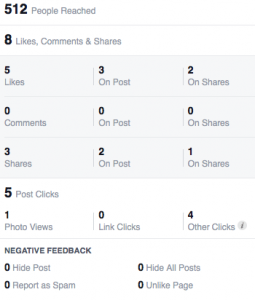Maybe the future of TV isn’t something for everyone
MeTV Toons shows old cartoons, and only old cartoons—and succeeds better at its appointed task than streaming services with budgets in the billions.
Last November, Warner Bros. Discovery’s Max streaming service announced that it was firing Bugs Bunny, Daffy Duck, and the Road Runner. To be more exact, it included its entire library of Looney Tunes cartoons on a list of content that would be leaving the service at year’s end. Animation lovers everywhere exploded in rage. Then Max hastily retracted the cancellation, claiming that the whole announcement was due to an error.
Whatever the actual backstory, the fact there could be uncertainty over the status of some of Max’s most iconic offerings was telling. The people running the streaming service are apparently so busy wrangling so much content that some of the greatest cartoons of all time became afterthoughts. Even now, the service shuffles Looney Tunes in and out of its lineup, which seems parsimonious for a company that owns all of ’em.
Which brings me to MeTV Toons, a new TV channel that debuted on June 25. A spinoff of the classic-TV channel MeTV, it shows nothing but cartoons (with a few tiny exceptions such as some puppet shows). Ones starring all the Looney Tunes characters, Tom and Jerry, Popeye, Betty Boop, Mr. Magoo, Casper, Rocky and Bullwinkle, Woody Woodpecker, the Flintstones, the Jetsons, Scooby-Doo, the Smurfs, Speed Racer, Underdog, and too many others to list. (Peter Potamus fans, rejoice.)
Officially, MeTV Toons is an over-the-air digital channel, though I’ve been streaming it via an online service called Frndly TV. Like MeTV itself and other channels from its parent company, Weigel Broadcasting, it has a time-tested business model: fill a programming schedule with familiar reruns and monetize them with commercials. Pretty low-rent ones in a lot of cases—incredibly, I just saw an ad starring Billy Mays, the infomercial pitchman who died 15 years ago.
In the Netflix era, the whole idea of a TV channel with ad-supported shows at scheduled times feels as retro as a 1935 Betty Boop cartoon. But MeTV Toons may be the best thing to happen to cartoons on TV since the big networks decided to devote Saturday mornings to them. There are lessons here for an industry that’s still trying to figure out how video entertainment should work in the post-cable era.
Weigel struck deals with Warner Bros. Discovery and other copyright holders to assemble the most sweeping roster of vintage animation ever shown in one place. It hired experts (such as my friend Jerry Beck) to help curate its collection. It’s airing notable cartoons that are far from overexposed (such as those featuring Woody Woodpecker and Mr. Magoo) and comfort food (more Scooby-Doo than I personally require, but your needs may differ).
Overall, MyTV Toons just seems to be dead serious about doing its job well. The chances that it will mistakenly announce that it’s getting rid of Bugs Bunny—or even Peter Potamus—are tiny.
Now, back to Max. Business Insider’s James Faris recently reported on a study that found only 20% of the service’s viewers had subscribed for at least six months and had never canceled it. Which means that even as Warner Bros. Discovery raises prices, it hasn’t cracked the code of making Max indispensable—at least not when Netflix, Amazon Prime Video, Disney+, Hulu, Paramount+, Peacock, and others are also jockeying for a spot in monthly budgets. (I’m one of those now-and-again Max subscribers myself.)
All of these streaming giants have a something-for-everyone strategy that’s costing billions to sustain. The newest trend—bundling up services even if they’re from different companies—is predicated on the notion that offering even more somethings will keep viewers from flitting around, reducing the churn reflected in Max’s low customer loyalty. Maybe, but this theory has yet to prove out.
Meanwhile, humble little MeTV Toons is only trying to do one specific thing well, on a tight enough budget to let it turn a profit from ads for car warranties and kitty litter. It’s off to an impressive start. And it wouldn’t astound me if it’s still hanging in there long after some of the megastreamers have learned you can’t please everybody.
You’ve been reading Plugged In, Fast Company‘s weekly tech newsletter from me, global technology editor Harry McCracken. If a friend or colleague forwarded this edition to you—or if you’re reading it on FastCompany.com—you can check out previous issues and sign up to get it yourself every Wednesday morning. I love hearing from you: Ping me at hmccracken@fastcompany.com with your feedback and ideas for future newsletters.
ABOUT THE AUTHOR
(5)
Report Post






